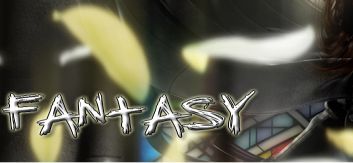soul calibur
From Wikipedia, the free encyclopedia
|
|
Developer(s) Namco
Publisher(s) Namco
Designer(s) Hiroaki Yotoriyama
Release date(s) 1998 (Arcade)
August 5, 1999 (JP/DC)
September 7, 1999(US/DC)
Genre(s) Versus Fighting
Mode(s) Up to 2 players simultaneously
Cabinet Upright
Arcade system System 12
Monitor Raster, 640 x 480 pixels (Horizontal), 65536 colors
Input 8-way Joystick, 4 Buttons
Ports Dreamcast
Soul Calibur is the second game in the Soul series of fighting games developed and produced by Namco, consisting of Soul Edge (Soul Blade in the US), Soul Calibur, Soul Calibur II, and Soul Calibur III. Originally an arcade game, Soul Calibur was ported and released for the Sega Dreamcast with improved graphics and new features.
Following the first game Soul Edge in 1995, the Soul series received a major makeover and was retitled Soul Calibur in 1999. Hence, Soul Calibur can also refer to the series consisting of Soul Calibur and its subsequent sequels (essentially the Soul series minus Soul Edge). Soul Edge was also a game created for the original Playstation. Its plot line is set before the game for the Sega Dreamcast.
Soul Calibur is the name of the holy sword, created to battle the evil sword Soul Edge, around which the games revolve.
Soul Calibur for Dreamcast is widely considered one of the greatest games of all time, and is the only game of the fighting genre, on any platform, to have ever received a perfect 10.0 rating from IGN.com (review)and GameSpot. Also, it was the second of only six games to receive a perfect score by Japanese gaming magazine Famitsu.
Contents [hide]
1 Soul Calibur
2 New characters
3 The story behind it all
4 Other notes
5 Box art
6 External links
Soul Calibur
Soul Edge / Blade had a strong following, but when Soul Calibur was released in the arcades, it was not as popular at the arcades as Namco would have liked or expected. Luckily for the series, Soul Calibur was picked up by the Sega Dreamcast, and became a smash hit almost overnight. Soul Calibur, the second game in the series, not the first, was set 3 years after the original and introduced a revolutionary feature, the Eight-Way Run. Previous 3D fighters had only limited movement along the third axis, with sidesteps and rolls providing useful but unsustained lateral movement. In Soul Calibur, simply holding down a joystick direction causes the character to run in that direction. This gives the player a sense of freedom and deepens the strategy of the game. Soul Calibur also improved game play with "forgiving buffering." Buffering is executing the input for one move before your character has finished recovering from his previous move. It is important for executing quick strings of moves. Tekken and Virtua Fighter have relatively strict buffering requirements, meaning expert timing is required to pull off many combinations, while Soul Calibur's relatively lenient buffering lets players focus more on the game and less on the controls.
New characters
Soul Calibur was originally planned to be a dramatic overhaul, featuring only a few select characters to be carried over from its predecessor, Soul Edge. While the initial plan did not exactly follow through--as nine of the eleven characters from the original roster had carried over by the time the game was ported to the Sega Dreamcast--the game still did manage to nearly double the size of the roster from the previous title. Most of these characters were readily available from the second the player opens the package, such as:
Astaroth - Bearded Axe
Isabella "Ivy" Valentine - Snake Sword
Kilik - Bo Staff
Maxi - Nunchaku
Nightmare - Soul Edge
Chai Xianghua - Chinese sword
Other new characters were required to unlock by some means or another in the game, such as:
Lizardman - Sword and Shield
Edge Master - Imitative Power
Inferno - Imitative Power (although Inferno was really SoulEdge from Soul Blade)
Yoshimitsu - Katana and Flag
But although the game added ten new characters, eight of the newcomers were, for the most part, updated versions of previously-existing fighters. Of the three main protagonists, Kilik's moveset was largely taken from Seong Mi-na, Xianghua's from Hwang; and Maxi was a greatly updated version of what Soul Edge's Li Long would have been if he had returned. And of three of the main antagonists, Nightmare's moveset was largely taken from Siegfried, Astaroth's from Rock; and Lizardman was heavily inspired by Soul Edge's featured heroine, Sophitia. In the Korean version of the game, Mitsurugi was replaced by a Caucasian swordsman named Arthur because the image of the samurai is not very popular with Koreans. Added to that is the fact that both Edge Master and Inferno switch their styles to match randomly-chosen existing characters' movelists with each individual round of fighting. In fact, Soul Calibur only added two truly original playing styles, shown in Ivy and Yoshimitsu; and even Yoshimitsu had some moves borrowed from established character Mitsurugi. Additionally, Taki has experienced a change of her own now that she wields dual tantōs instead of one. Consequently, Namco has been working hard since Soul Calibur to gradually separate the roster's styles until the series features completely original styles for each of its characters.
All characters from Soul Edge returned with the exceptions of Li Long and Seong Han-myeong (SoulEdge returned as Inferno)
The story behind it all
Soul Calibur is purportedly set in the sixteenth century, and its plot is set into motion by a powerful demonic, soul-draining sword called Soul Edge. Soul Edge is said to be the ultimate weapon, the person wielding it unbeatable in battle and therefore potentially able to alter world events as they see fit. However, it is quasi-sentient and extremely malignant, corrupting all who come into contact with it, eventually killing them or driving them insane. Half of the sword is destroyed by Sophitia during a fight with Cervantes de Leon, spreading evil power and shards of the weapon across the world. The remaining half takes over the mind of a German knight named Siegfried, warping him into a demonic being known as Nightmare and causing him to slaughter innocents across Europe for three years. At the same time, another powerful sword called Soul Calibur, a weapon imbued with divine energy (if Soul Edge is the 'Soul sword,' then Soul Calibur is the 'Spirit sword'), appears and seems to destroy Soul Edge. Soul Edge's power is not eliminated, however, and its influence continued to wreak havoc on the world and on Soul Calibur, which became partially corrupted.
Skilled fighters from across the world pursue Soul Edge for various individual reasons; some for the power that possessing an unstoppable weapon would grant them, others to destroy its evil influence. Soul Calibur, by contrast, seems to be much less renowned; some of the characters in the game seem to not even be aware of its existence.
[edit]
Other notes
The characters Sophitia and Lizardman (and eventually Sophitia's younger sister Cassandra from SCII) worship the Greek gods, but this is an anachronism. It is much more likely that a Greek of the 16th Century would be a member of the Greek Orthodox Church.
The Dreamcast version of this game was the 2nd game in history to be given a 40/40 score by the respected game magazine "Famitsu".
|
|
|||||
|
|
|||||
|
|




